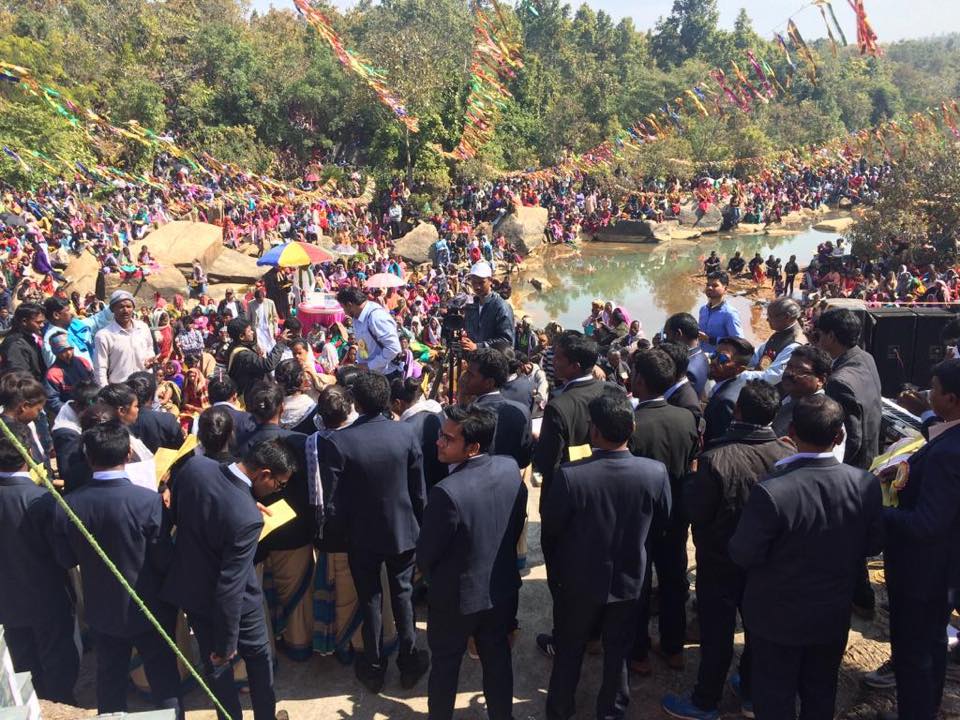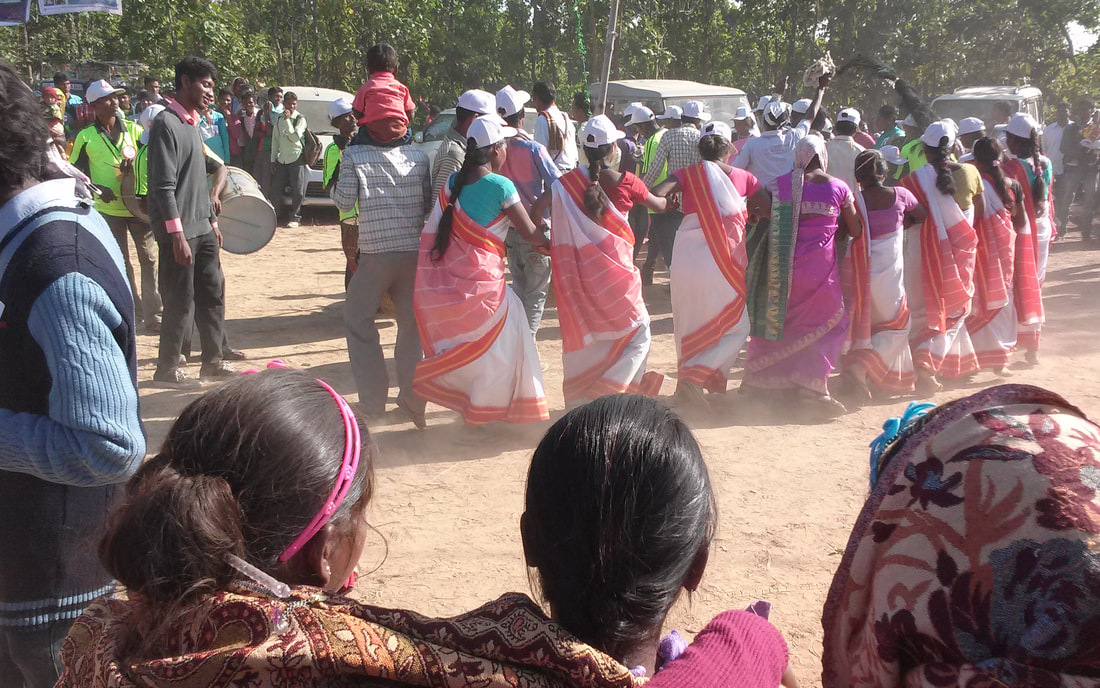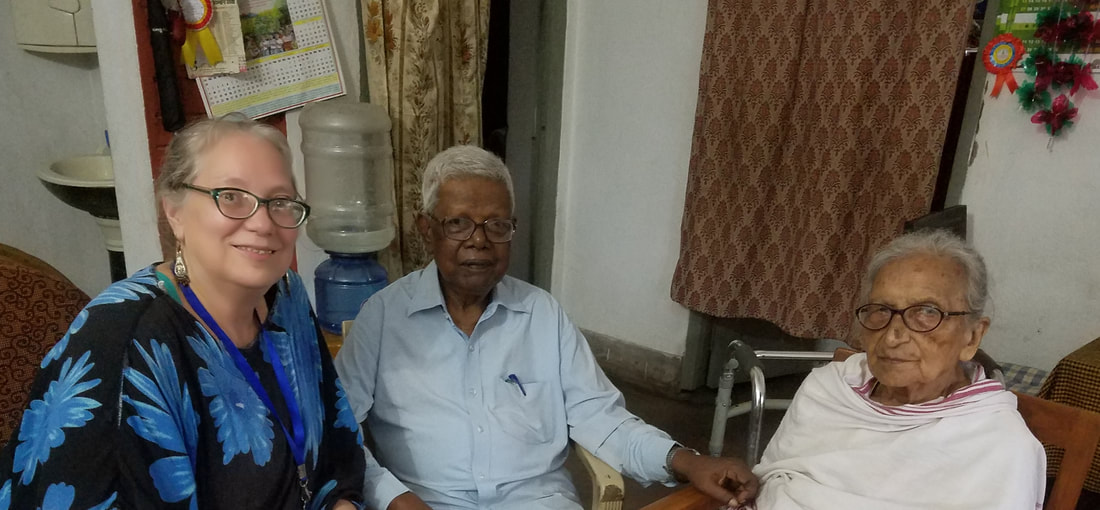|
The Lutheran Adivasi Christians of Jharkhand and environs have recently begun to celbrate a very important event in their history. The event occurred in 1857 during the Great Rebellion (Mutiny). The first struggle for liberation, that most people know about in India, played out slightly different for the Adivasi Christians living in and around Ranchi. It was a time of feirce persecution that was endured at the hands of the powerful zamindars in the region (though the soldiers did seem to join in their rampage).
For several hundred years outsiders had been coming into the jungle region of the Chota Nagpur plateau, taking over land that had once been only the dwelling place for various indigenous tribes: the Munda, Oraon, Ho, Kharia, Santal, etc. These orginial dwellers coexisted with each other and the land the water and the forest (Jamin, Jal, Jungle). Their existence was threatened by the growing influx of the outside world that took over their land, labor, and livelihood. The battle continues on today. But through it all their tribal identity has not been wiped out. Between 1850-1857 some Adivasi were drawn to Christianity. The Christian message of liberation and belonging spoke to them deeply. The German missionaries provided them education and socio economic stability. Both the Indian and British rulers, however, were not well pleased with this and reinforced the landownership (zamindar) system that oppressed them and alientated from the livelihood that they were so connected to. When the Indian soldiers revolted against the British East India company, that was ruling much of India in 1857, the local zamindars in Chota Nagpur took this as an opportunity to attack the Christian Adivasi. Their homes and villages, books, churches and schools were attacked. The missionaries fled. But the 700 Christian Adivasi had to fend for themselves, under the leadership of the first convert among them, Navin Doman. 100 of them, mostly children, were pursued into the jungle by armed men. The monsoon was in full force and the rivers were swollen. When they reached a river lightning miraculously hit a tree that created for them a bridge to an island. Than as equally miraculously, after all had crossed over the water washed the tree away before the armed men arrived. The group stayed on the island for several months, living off the produce of the jungle, using their age-old indigenous wisdom. Even after the river had dwindled into a small trickle, they stayed hidden away, unsure what was happening outside. The coast would not be completely cleared of the rebel forces in the region until the beginning of 1858. In the meantime, as the persecuted Christians shared with other Adivasi of how God had been with them through their terrible ordeal, others also wanted to join the Christian faith. By the time the Christian Missionaries returned to Ranchi a year later, they found thousand more Adivasi who were anxious to be baptised and learn about the Christian faith. Now, 169+ years later, Christianity has spread among the Adivasi of this region, so that about half of them are Christian (Lutheran, Catholic, Anglican or other).* The Christians celebrate this important event, Kristan Dari, on January 31st (when the river is almost completely dry) 10,000 come from all over for this pilgrimage and celebrate the Lord's communion together among the rocks and sand beds. This year is also the jubilee year (100th anniversary) of the autonomy** of the Gossner Evangelical Lutheran Church. The mother church and the offshoot, the NWGELC, will be having celebrations that I will attend in July and November. Other Christians will join in the celebrations, for indeed all Christians in the region share in this glorious legacy. For the Adivasi, whether Christian or not, these are very difficult times in India. Minorities of all kinds are facing pressures from all sides. Indeed a few have benefitted from education and economic development, but even they have not lost completely their connection to the Jamin, Jal, Jungle. They remain essentially tribal: and must not lose sight of the environment (their houses, fields, work, animals, plants, trees, weather and sky)***, their ancestors, their children, their community, their culture. In the Bible the Jubilee year deals with land, property, and rights. Slaves and prisoners are to be freed, debts to be forgiven and the mercies of God would be manifest. When Jesus began his ministry he heralded the year of Jubilee as a perpetual reality of the realm of God, which is not some distant reality, but a very present one, to be lived out. So my hope is that the Jubilee year of Autonomy will bring much needed justice, mercy, reconciliation, liberation, to all living in the land of the orginal dwellers (Adivasi). ======================= * I hope to have the biography of my great great grandfather published by this summer: Among the Original Dwellers: The life of Ferdinand Hahnd. I make a case that the spread of Christianity had as much to do with the Adivasi as it did with the German missionaries. **Autonomy: 1919 the GELC (Gossner Evangelical Lutheran Church of Chota Nagpur and Assam) was granted autonomy by the British government. This means they ran their own church and institutions with only some support and partnership from the outside (western missions). This was the first native church to receive autonomy well before India's independence. *** Paul Wagner in Journal of the Asiatic society. collection of Mundari Riddles. 1908
1 Comment
|
Click here to learn more!
AuthorMary Girard with Bishop Nirmal Minz and his wife, Parakleeta, two remarkable leaders of the Adivasi Christians of Jharkhand. They are writer's themselves and have encouraged me much in my pursuit as a writer and have inspired many others. I am an author of my first book that is seeking publication. Among the Original Dwellers: Remembering Ferdinand Hahn, tells of the life story of my great great grandfather who was a missionary from 1868-1910 in Chota Nagpur. In writing his story I discovered the story of the Adivasi of the region who were also impacted by his life. I am now committed to inspiring others to learn and write about their Christian Adivasi heritage. Archives
April 2022
Categories |



 RSS Feed
RSS Feed